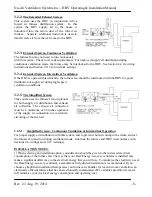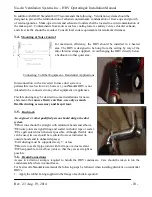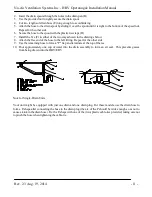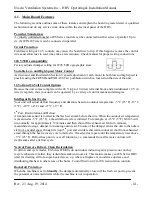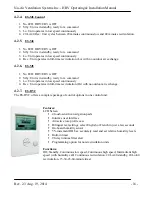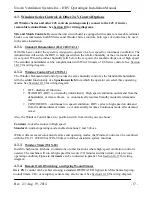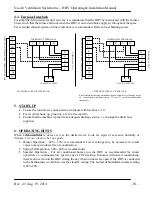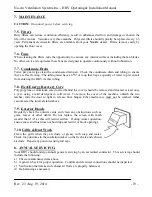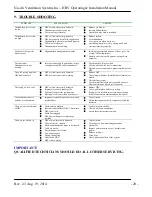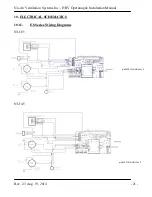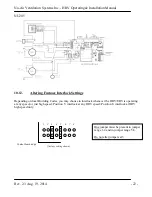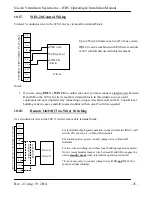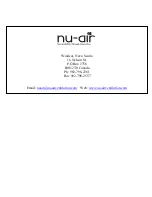
Nu-Air Ventilation Systems Inc. - HRV Operating & Installation Manual
Rev. 2.3 Aug. 19, 2014
- 20 -
9.
TROUBLE SHOOTING
SYMPTOM
EXPLANATION
ANSWER
The humidity level seems
too low.
HRV air flows incorrectly balanced.
Dehumidistat control set too low.
Lifestyle of the resident(s).
Balance Air Flow(s).
Increase Dehumidistat.
Humidifiers may need to be added.
The humidity level seems
too high.
HRV air flows incorrectly balanced.
HRV not properly sized for the application
High humidity areas not ventilated properly.
Lifestyle of resident(s).
Dehumidistat is not working.
Balance airflow.
Set dehumidistat.
Cover pools etc. when not in use.
Avoid hanging clothes to dry, storing wood and
venting clothes dryer inside.
The house is dry but the
basement wet.
High humidity during summer months
Install a programmable timer on 12-hour cycle. On
at night. Off during the day.
Partially close some grills upstairs, open grills in
basement.
The Controls or
Dehumidistat are not
working.
Incorrect connection of outside low voltage
wiring between HRV and Dehumidistat.
Check control wiring for short
Check wall switch for correct connection.
Check wires are connected to proper terminals at the
HRV
There is Frosting up of the
HRV and/or duct(s).
HRV air flows incorrectly balanced.
HRV defrost system is not working.
Balance HRV.
Check integral damper, install back draft dampers as
needed.
Check defrost system.
Note minimal frost build up is expected on cores
before unit initiates defrost cycle function.
The supply air feels cool.
HRV air flows incorrectly balanced.
Improper location of supply grills.
Extremely cold outside temperatures.
Moving air feels cooler than it actually is.
Balance HRV.
Locate grills high on walls or in ceiling.
If supply air is installed into return line of furnace,
furnace fan must run continuously on low speed.
The outside duct has ice
build up or condensation.
Improperly installed vapour barrier around
insulated duct.
Tape all joints.
Ensure that vapour barrier is completely sealed and
insulated.
There is water in the bottom
of HRV.
Drain pans are plugged.
Incorrect connections of HRV’s drain lines.
HRV is not level.
Drain lines plugged.
HRV heat exchange core improperly
installed.
Look for kinks in the line.
Check water drain connections.
Ensure that water drains from pan.
There is poor air flow(s)
HRV airflow incorrectly balanced.
Filters need to be cleaned.
Mesh on outside hoods needs to be cleaned.
Grills are closed.
Present dampers are closed.
Low power supply.
Wrong-size ducting.
Under-sized HRV.
HRV is not working.
Tape all joints.
Use proper air flow measuring equipment.
Open grills.
Remove obstructions in duct(s), hoods(s), and
grill(s).
Balance air flows.
Clean filter.
Have a professional look at the system.
IMPORTANT!
QUALIFIED TECHNICIANS SHOULD DO ALL OTHER SERVICING.



